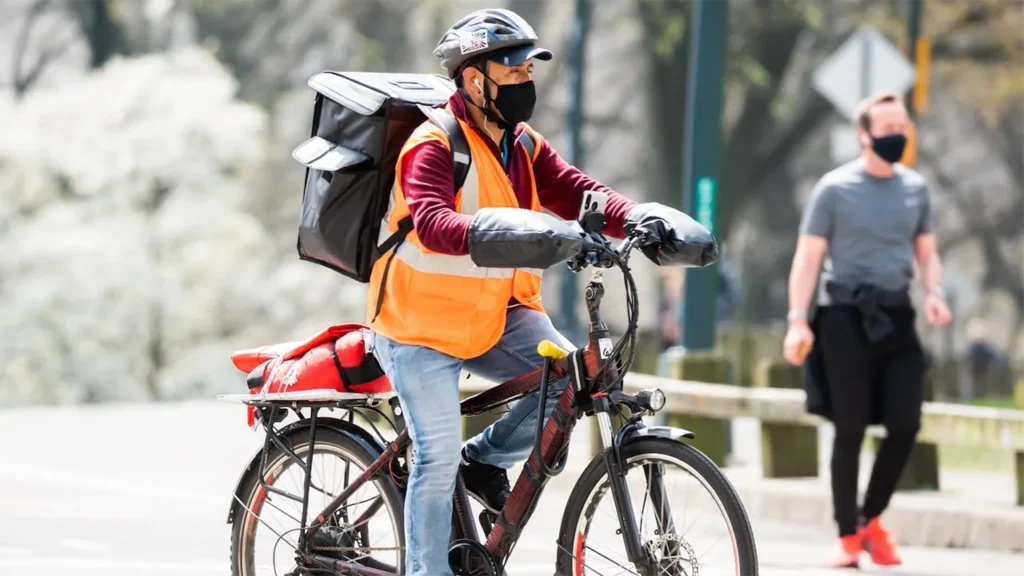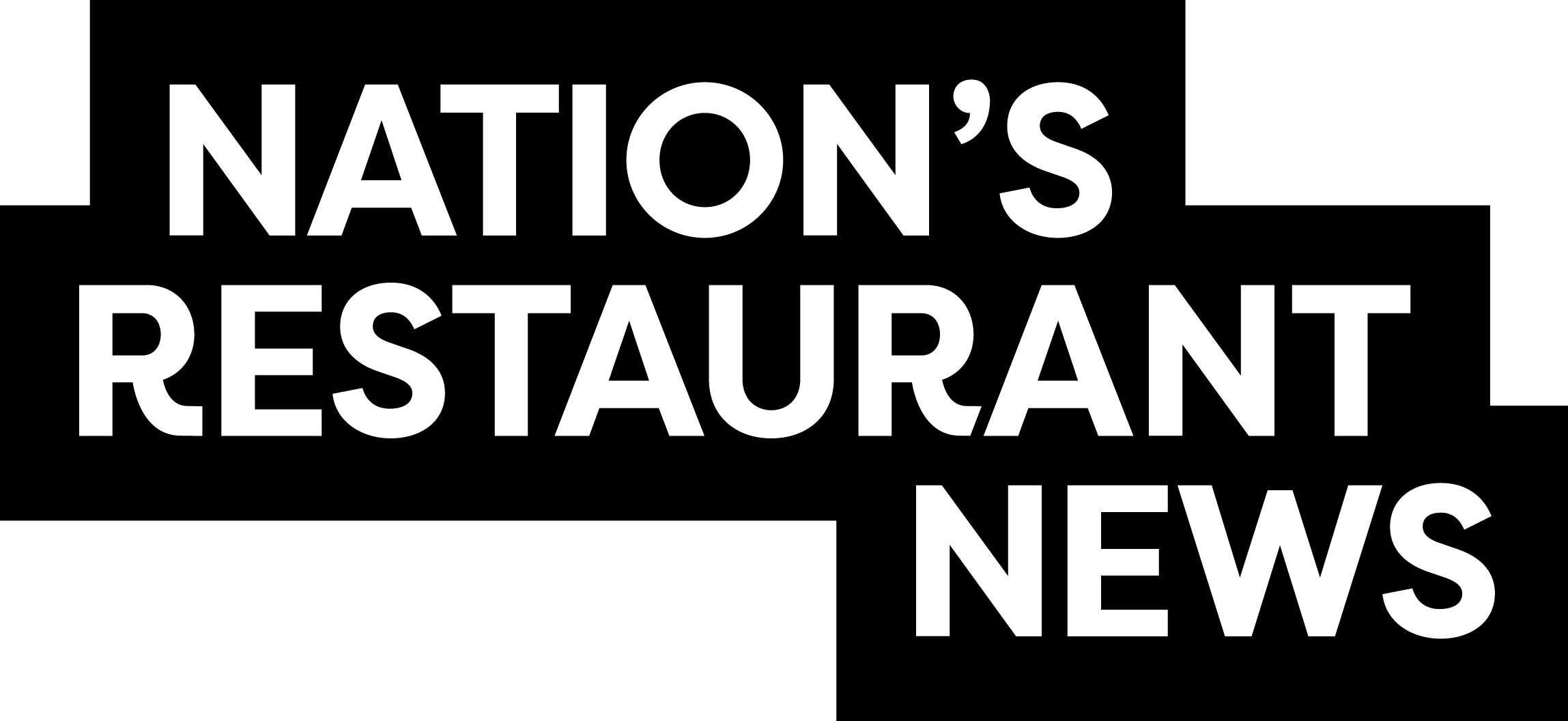Catering, couriers, and the tax-free tip boom: What restaurants need to know now
The delivery landscape is evolving, and so should your brand
20 August 2025
Share this exclusive content from Saladplate

Photo Credit: Getty Images
Recent federal legislation eliminating taxes on tips for gig workers has fundamentally shifted the economics of delivery. While this change might seem like a simple policy adjustment, it’s creating ripple effects throughout the restaurant delivery ecosystem that smart operators need to understand and prepare for now.
For restaurants, especially those with substantial catering operations, this isn’t just a policy footnote. It’s a fundamental change in how drivers evaluate and prioritize deliveries, with high-value catering orders becoming increasingly attractive while smaller orders may struggle to find reliable fulfillment.
The math is straightforward: when tips make up roughly 50% of a driver’s earnings (according to Gridwise data), removing federal taxes from that income represents a significant boost in take-home pay. For catering deliveries, where gratuities often average $43 per order at 12% (ezCater data), drivers are now looking at substantially higher net earnings — and they’re making delivery decisions accordingly.
Why High-Value Orders Just Got Even More Attractive to Drivers
Gig drivers have always been selective about which deliveries they accept, often basing decisions on visible tip amounts through platforms like Uber Eats, where drivers see “expected payout” including gratuities before accepting an order. With tips now tax-free, that $43 average catering tip translates to significantly more take-home income than before.
This creates a clear hierarchy in the delivery ecosystem. Food delivery already had the highest percentage of pay composed of tips compared to other gig work — 53.4% according to recent Gridwise data, compared to just 10.4% for rideshare. Now, within food delivery itself, catering orders are becoming the premium tier that drivers actively seek out.
The reasons extend beyond just tip amounts. Catering deliveries offer several advantages that make them increasingly attractive to quality drivers:
- Larger, predictable tips that are now completely tax-free
- More predictable routes and timing, allowing drivers to plan their day efficiently
- Lower risk of problematic customer interactions compared to residential deliveries
- Professional delivery environments with clear pickup and drop-off procedures
The inevitable result? High-quality drivers are gravitating toward catering work, while lower-value orders may face longer wait times, higher rejection rates, or assignment to less experienced drivers.
The Restaurant Perspective: A Tipping Strategy is No Longer Optional
This shift in driver behavior creates real operational challenges for restaurants. When drivers become more selective about deliveries, restaurants face increased risks around order acceptance rates, fulfillment reliability, and ultimately, customer satisfaction.
The impact extends beyond just getting orders delivered. Your tipping model now directly affects:
- Order Acceptance Rate: Insufficient or unclear tipping can lead to outright delivery rejections, causing delays that devastate catering experiences where timing is critical.
- Driver Reliability: Quality drivers who understand the value of tax-free tips will prioritize restaurants that structure gratuities transparently and generously.
- Customer Satisfaction: Failed or delayed deliveries due to driver rejections create negative experiences that damage your catering reputation.
- Kitchen Staff Morale and Retention: Here’s a crucial point many restaurants overlook—in operations using tip pooling, this new law doesn’t just benefit gig couriers. When tips from large catering orders are divided among staff through tip pools that include kitchen employees, your W-2 staff also benefit from more generous, tax-free gratuities. This can significantly boost morale and improve retention among back-of-house teams who often don’t receive recognition for their role in successful deliveries.
The bottom line: Restaurants that haven’t thoughtfully structured their tipping approach may find themselves struggling to secure reliable delivery service for their most valuable orders.
Building a Modern Tipping Framework
As we outlined in our previous analysis of tipping challenges in catering delivery, there are several effective models restaurants can implement:
- 100% to Drivers: Simple but can create kitchen staff friction on high-value orders where substantial gratuities go entirely to drivers while kitchen teams see no benefit.
- Separate Service Charge & Gratuity: Two distinct checkout lines — one for restaurant staff, one for drivers. Most transparent but adds checkout complexity.
- Single Gratuity with Internal Split: One gratuity field with clear communication that tips are shared. Simpler checkout experience while maintaining fairness.
With tax-free tips now amplifying the financial impact of these decisions, getting your model right has become even more critical to operational success.
Aligning Technology & Policy in Your Delivery Setup
The increased importance of tipping strategy means your delivery platform needs sophisticated backend capabilities to manage this new reality:
- Tip Pooling and Distribution: Robust tools to track and distribute gratuities fairly across staff, with detailed reporting for compliance and transparency.
- Minimum Tip Enforcement: Some providers now require minimum tip amounts before accepting orders. Your platform should support these requirements to prevent service disruptions.
- Multi-Provider Management: Different delivery partners have varying tipping policies. Your technology should seamlessly work across providers, each with their unique requirements and restrictions.
- Custom Tip Passing: The ability to pass specific tip amounts to third-party providers while maintaining internal distribution flexibility.
Remember, some delivery providers may reject or deprioritize orders with insufficient tips or unclear tipping structures. Your technology stack needs to navigate these complexities automatically.
The Delivery Landscape is Evolving; So Should You
The era of tax-free tips represents more than just a policy change — it’s a fundamental shift in delivery economics that requires strategic response. Restaurants that continue to treat delivery and tipping as afterthoughts may find themselves losing access to the best drivers and undermining their catering programs just as this revenue stream becomes more critical than ever.
The most successful operators will view this change as an opportunity to differentiate their delivery experience. By implementing fair, transparent tipping strategies supported by robust technology, restaurants can attract quality drivers, maintain staff satisfaction, and ultimately deliver better experiences for their catering customers.
As we head into peak catering seasons, now is the time to review your delivery and tipping setup. The restaurants that adapt quickly to this new reality will have a significant competitive advantage, while those that ignore it may find their catering operations struggling to keep pace with customer expectations.
The delivery landscape is evolving rapidly — make sure your restaurant evolves with it.

Source: Nation’s Restaurant News



